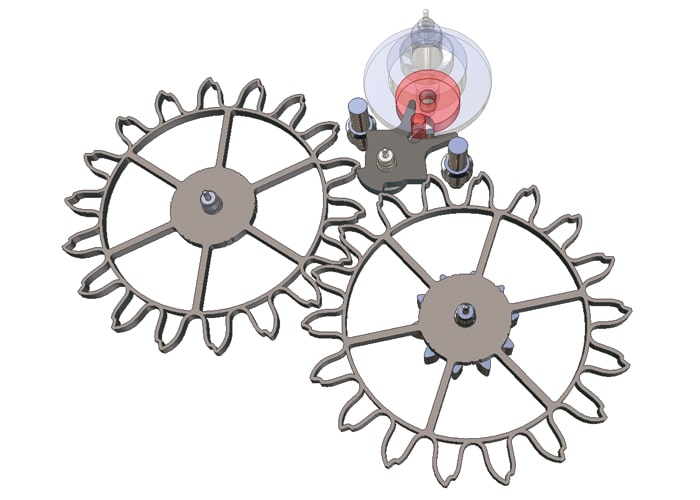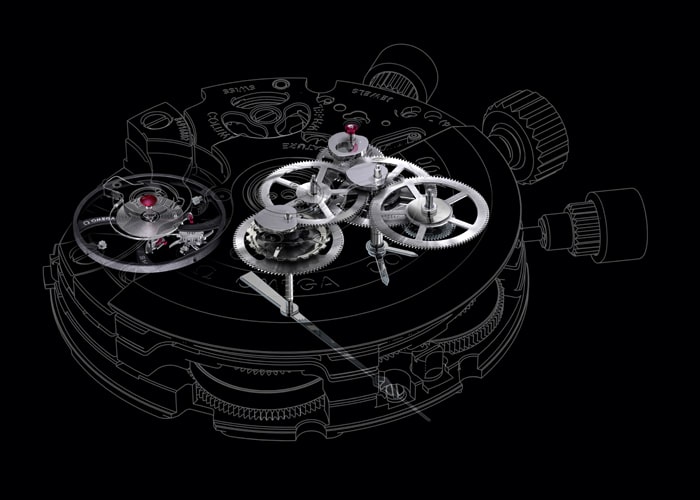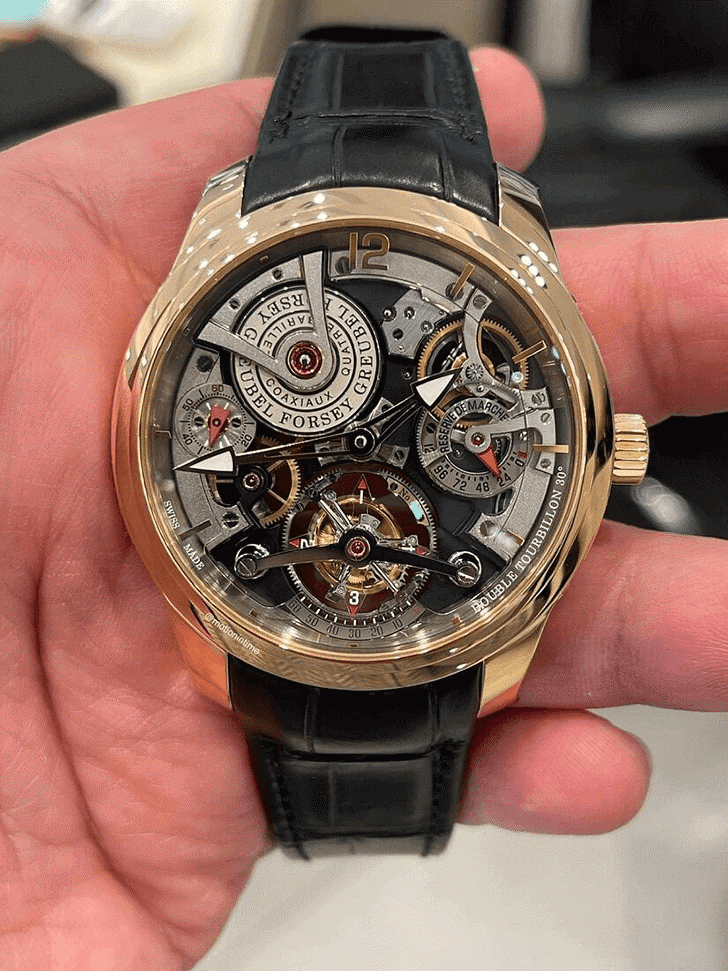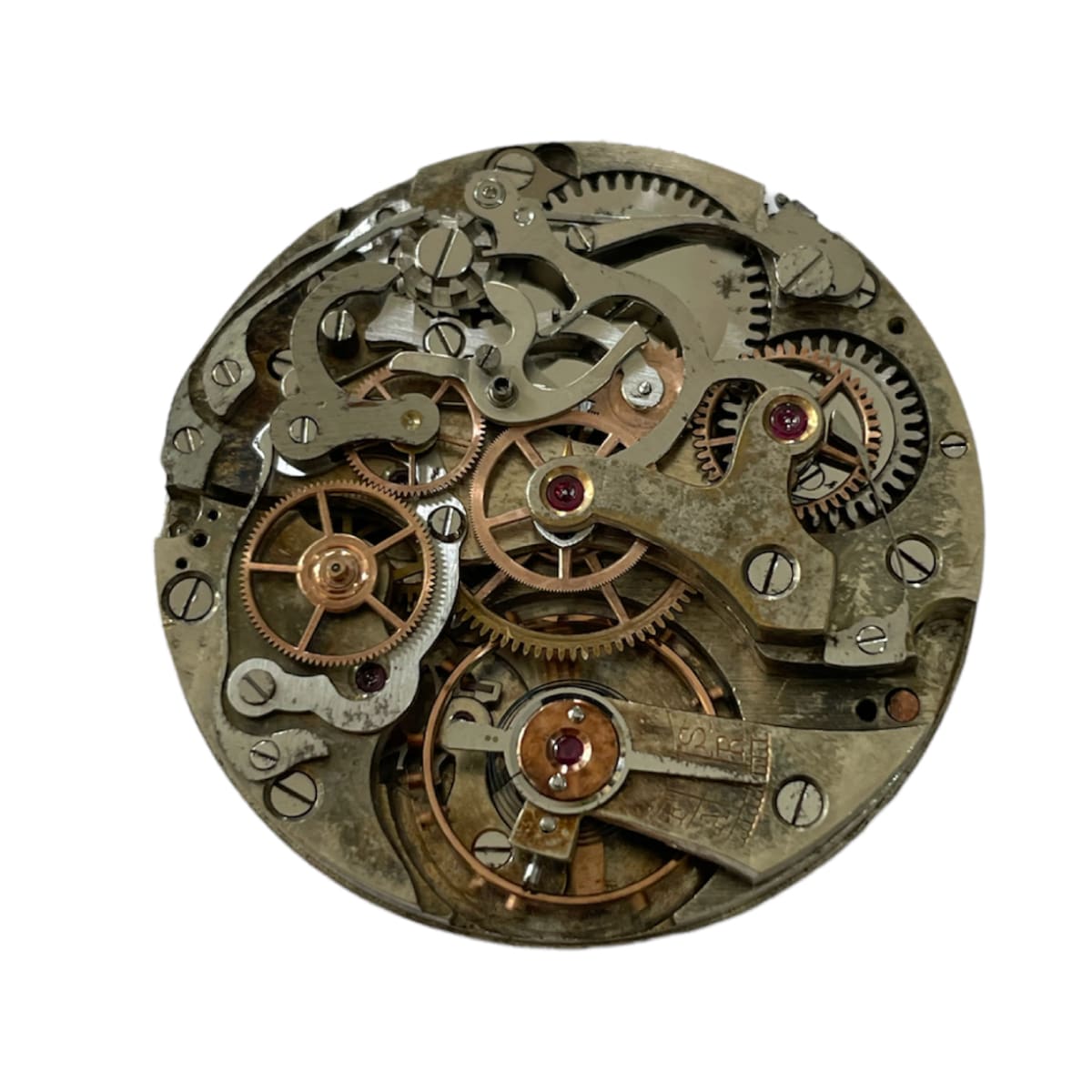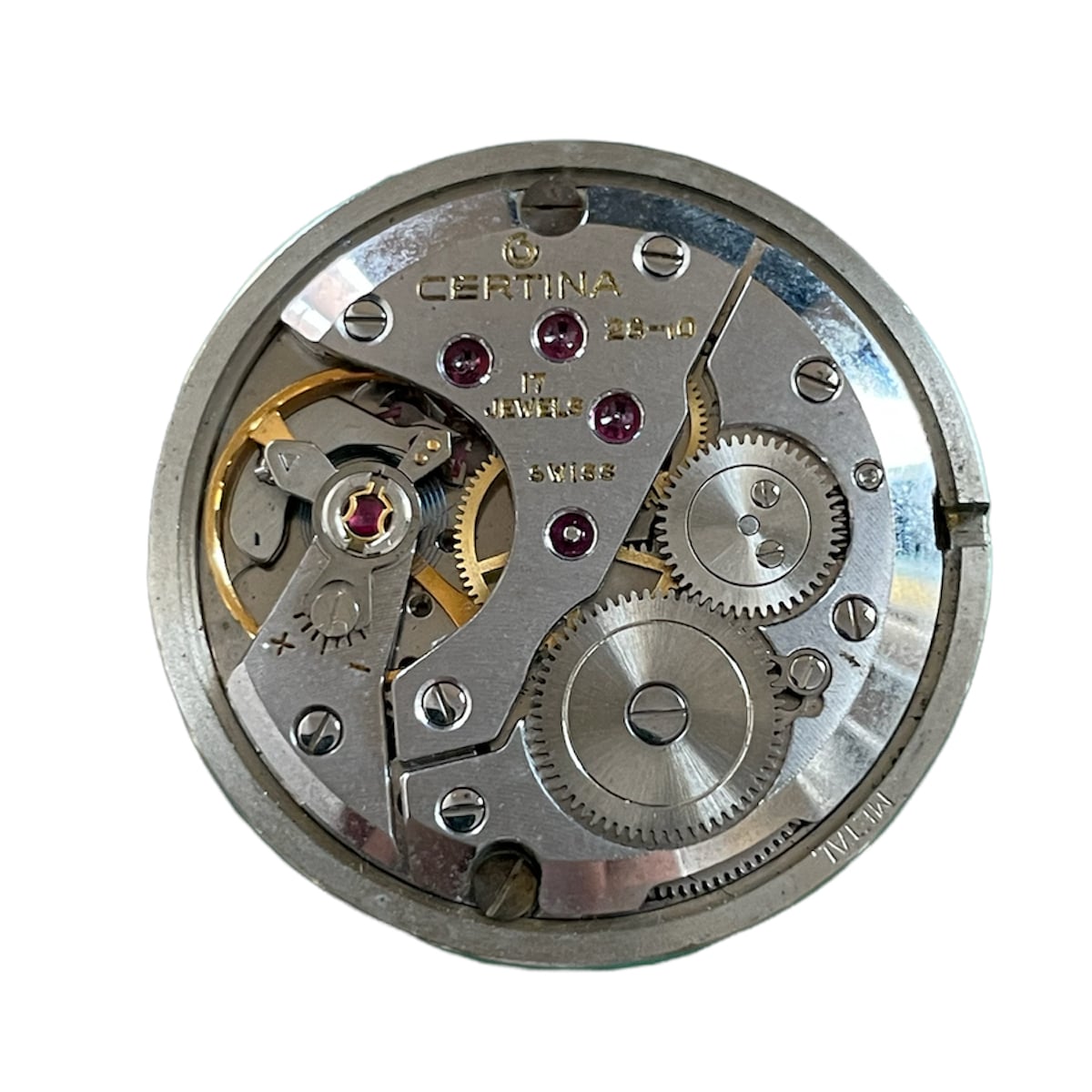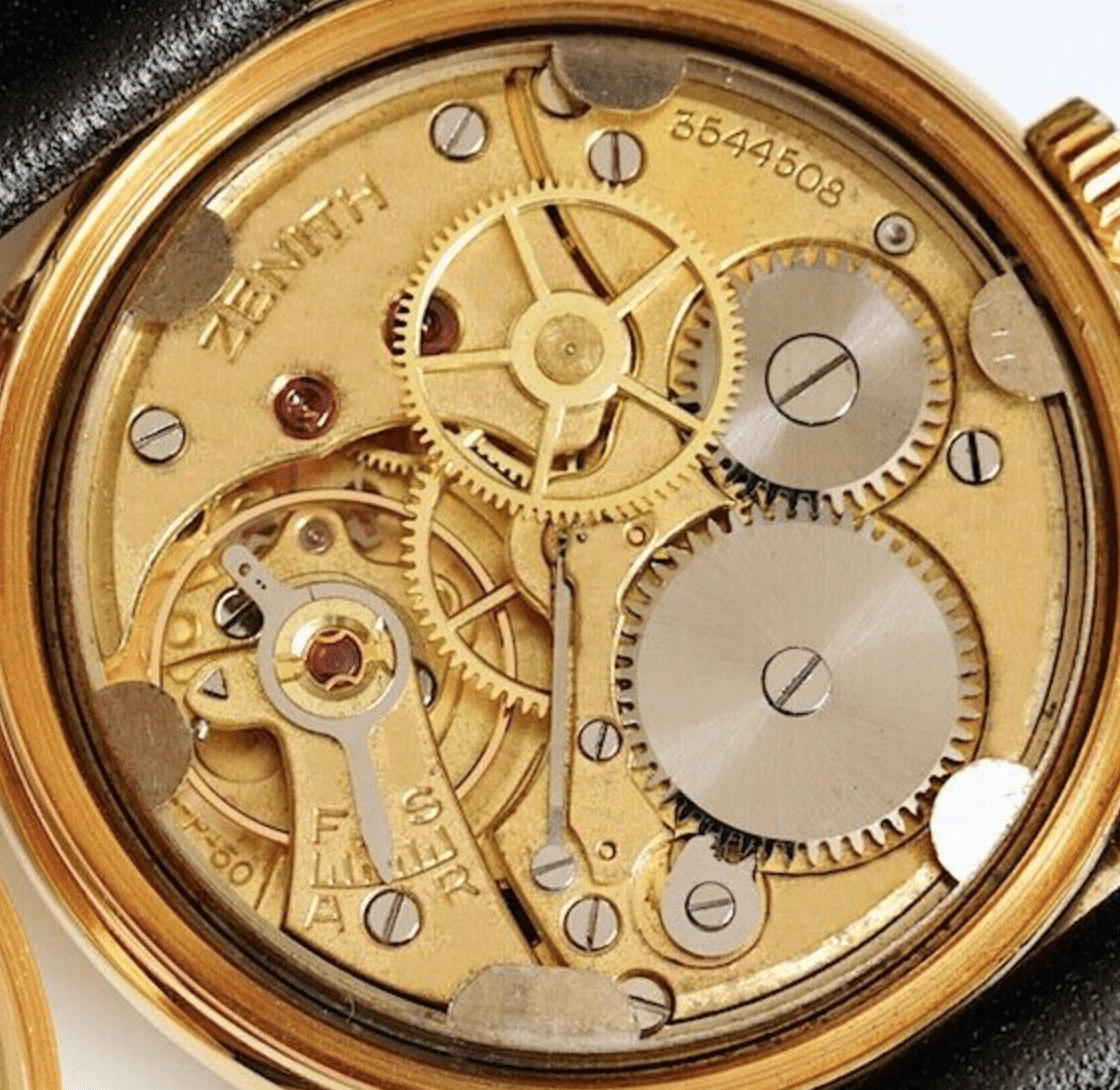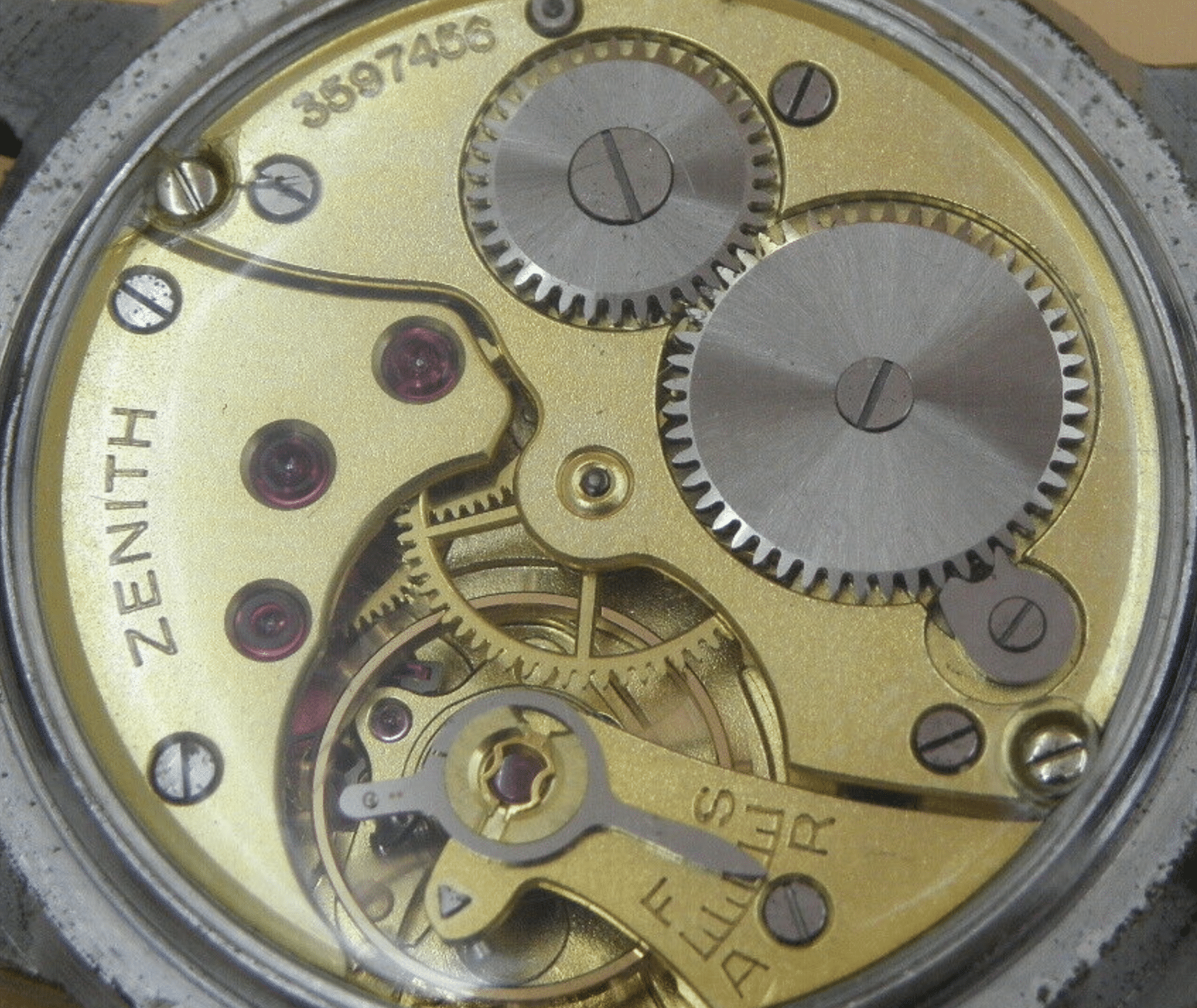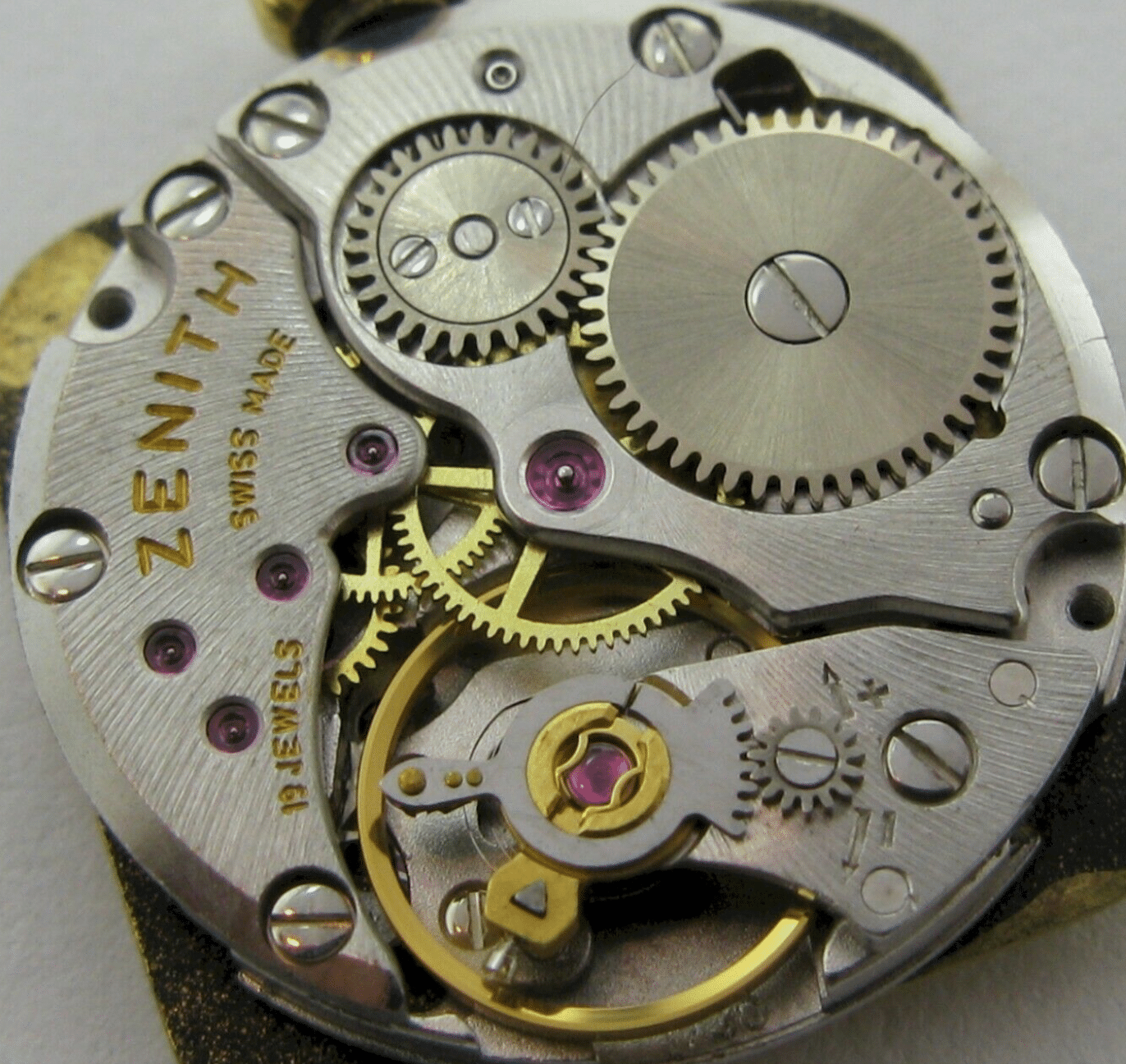In the history of horology more effort has been devoted to the escapement than to any other functional part of a timepiece. In the 18th century, when most of the current systems were invented, the escapement was not only seen as fundamental, it was also a matter of prestige. Breguet, Graham and Leroy were among those who made it a special study in the hope of solving most of the problems of reliability and accuracy that plagued timepieces of the era, including marine chronometers. As the interface between the going train and the regulating organ, the escapement is where force and frequency intersect in a complex interaction. Improving its efficiency has repercussions on the entire mechanism, its power reserve, its precision, life span and prestige.
Stop and Go.
The escapement acts alternately as both a brake and a motor. On one side the energy stored in the mainspring barrel seeks release and has to be controlled. On the other, the balance and spring assembly needs to be kept going by impulses that are as regular as possible in strength and frequency. The escapement controls the energy by releasing it at a steady rate dictated by the oscillations of the balance-wheel. The balance frequency of 3, 4 or 4 Hz is the fundamental division of time into sixths, eighths or tenths of a second. Upstream in the movement, the gear train translates these fractions into seconds, minutes, hours or longer periods.
Another way of understanding how it works is to consider the balance and spring as a computer master clock beating at a steady frequency. This phenomenon, known as isochronism, can only happen if several conditions are met, most of them involving the escapement. This acts like a semiconductor in two states, either on or off, depending on whether the escape wheel is in motion and transmitting energy or stopped. In fact the escape wheel is more often stationary than not, and a working watch movement thus spends most of its time stopped with the escapement locked. This horological paradox can be appreciated by using a high-speed camera that deconstructs the functions of a watch.
Greedy for Energy
The escapement consumes a lot of energy. Its mechanical efficiency seldom goes beyond 50% which means that it alone uses up more than half the energy supplied by the barrel. The energy is dissipated in the various points of friction that are inseparable from the escapement’s operation. The friction between the pallet stones and the escape-wheel teeth accounts for much of this energy, despite oiling, and efforts to improve escapements generally focus on reducing this source of friction. However, research into escapements more or less came to a halt after the 1850s. Furthermore, 250 years after the lever escapement was invented, its Swiss version was considered to have reached its optimal performance, making any further development pointless. Its components are indeed easy to make and its operation is simple: the lever’s two pallet stones perform the twin tasks of stopping the escape wheel as a brake and impelling the balance as a motor. But the Swiss lever escapement’s decisive qualities are more likely its resistance to shocks and its small size – ideal for wristwatches.
Why Reinvent the Wheel ?
Until the 1970s, Swiss watchmaking was producing industrial quantities of mechanical movements and had no inclination to reinvent the wheel. It was not until the 1980s that George Daniel’s patent for the coaxial escapement changed the situation. It was finally taken up by Omega in 1999, which only started using it in large quantities several years later. However, it was followed by a few highly sophisticated alternative escapements that can be divided into three types. The first seeks to simplify the escape mechanism. The detent escapement invented by Pierre Le Roy in the 1760s, and recently reintroduced by Urban Jürgensen, has only one pallet stone in a single locking position that it leaves only momentarily. It lifts to release the escape wheel, which directly impulses the balance in passing, and then drops back to lock the escape wheel. Although the principle is straightforward, it is not easy to apply in wristwatch that is constantly being shaken around.
Division of Labour
The second approach is to reduce the contract between the lever pallets and the escape-wheel teeth. This is paradoxically achieved by actually increasing the number of pallets and points of contact, because the locking and impulse functions are separated. This is the principle behind the coaxial escapement and that of Audemars Piguet, reserved for its luxury pieces. Paul Gerber has also made tentative efforts in this direction. The third solution is based on Abraham-Louis Breguet’s echappement naturel experiments with two linked escape wheels. They are locked alternately, in turn transmitting energy and information at each swing of the balance. The impulse is given directly to the balance, increasing the energy efficiency. Escapements by Francois-Paul Journe, Ulysse Nardin, Kari Voutilainen and Laurent Ferrier are based on this idea. Their versions differ in the size and shape of the lever and the escape wheels with which it interacts. To a certain extent the Girard-Perregaux constant-force escapement works on a similar principle, enhanced by a unique energy-management system.
Overcoming Inertia
In parallel with these developments, research into component manufacture has also made its contribution to the performance of escapements. When the friction is reduced, inertia takes on a relatively significant importance. This is why quite a number of systems try to reduce weight with openworked escapement teeth and skeleton levers and by using titanium or, inevitably, silicon. At the same time LIGA technology and additive galvanisation achieve incredibly tight tolerances. If Abraham-Louis Breguet, Thomas Mudge or Robert Robin had enjoyed access to standard parts of such precision and reliability, their rather elaborate systems would undoubtedly have had a different future.
Swiss Lever Escapement
This has been the de facto standard for mechanical watches since the 1920s. Its practicality made it ideal for the wristwatches that were then becoming the standard fashion. A lever with two arms in turn locks and releases the escape wheel. The balance is given an impulse at each semi-oscillation. However the impulses are not direct and its mechanical efficiency is low. Despite its straightforward configuration, the lever pallets slide for some distance along the escape-wheel teeth, creating a log of friction. No matter, the entire watch industry has long gotten used to that. The best lever escapements can maintain amplitudes of 300º and an almost perfect rate.
Advantages: simple, cheap, robust, commonplace.
Drawbacks: generic, low mechanical efficiency.
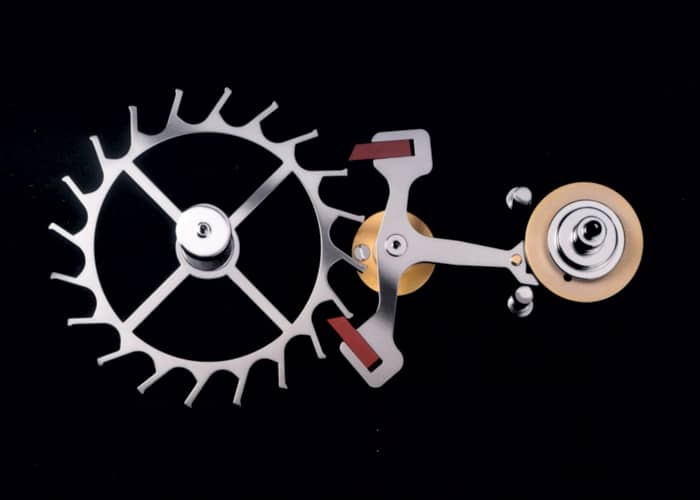
Constant Escapement
Girard-Perregaux makes the only escapement that can be strictly described as having constant force. Its looks are as unique as its operation. A slightly curved blade crosses a large wing-shaped frame, which is in fact the escapement bridge in silicon. The oscillations of the balance wheel make the blade bend back and forth, releasing an escape wheel one tooth at a time. The sequence resumes when the balance-wheel changes direction. The blade only bends when the right amount of force is applied and releases the same amount of energy each time, providing a constant force. With two impulse wheels it has many of the advantages of the double- wheel escapements.
Advantages: innovative, constant-force, double impulse.
Drawbacks: expensive, complex, necessarily large.
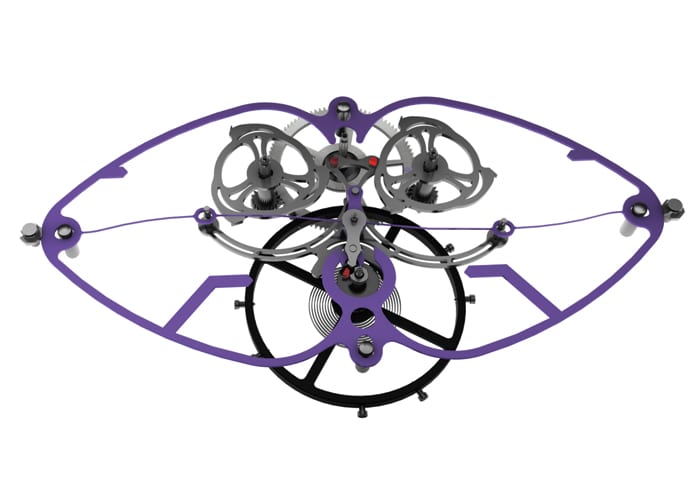
Isometric Elliptical Escapement
It didn’t last long. The isometric elliptical escapement was originally fitted to the calibre 175 movement of the Grande Reverso Triptyque and then abandoned by Jaeger-LeCoultre. It turned out to be less accurate on the wrist than it conventional lever equivalent. It was a variant of the detent escapement and having failed to overcome its sensitivity to shocks, it remained delicate, even when installed in a tourbillon carriage for the Triptyque Reverso. The tourbillon is in fact not an escapement itself but an adjunct to escapements. Even the resources of a big firm like Jarger-LeCoultre were not enough to make such an innovation reliable.
Advantages: high amplitude, prestigious, fascinating.
Drawbacks: inferior to the Swiss lever on the wrist, complex.
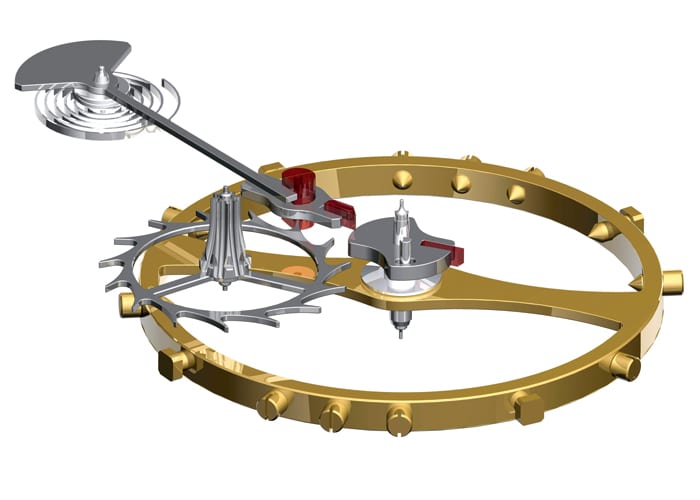
Audemars Piguet Escapement
The lever of the AP escapement looks like the conventional lever but with a third pallet. For Audemars Piguet, it’s a hybrid between the lever and the detent inspired by the Robin escapement. As in the coaxial escapement, the contact between the escape-wheel and the pallet is tangential. The contact surface is reduced from 0.4mm to 0.05mm. The escape-wheel teeth are skeletonised to increase efficiency. This escapement is now only fitted to two movements, the latest of which dates from 2009. The first movement has a power reserve of 10 days and the second, a frequency of 6Hz. It’s a pity that such an efficient and flexible movement has been sidelined.
Advantages: efficient, effective, needs no oil.
Drawbacks: limited to grand complications, neglected.
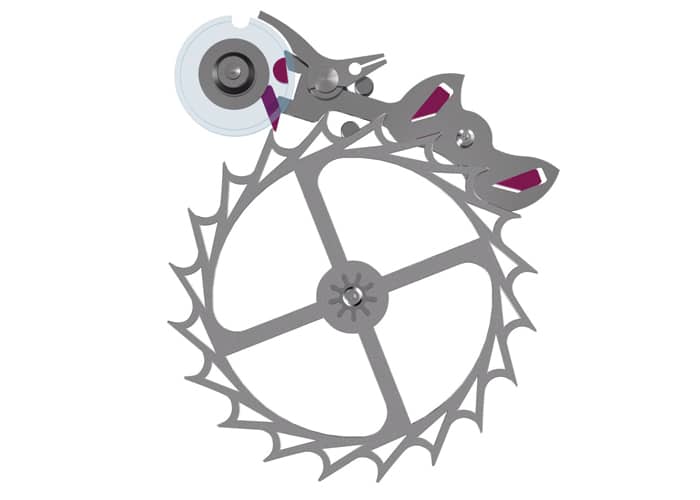
Coaxial Escapement
Devised by Georges Daniels and acquired by Omega, the coaxial escapement is the only mass-produced alternative to the Swiss lever. The penetration depth of the palette stones is far lower than that of the lever escapement due to an intermediate and coaxial escape wheel. The friction is reduced because the contact with the stones is tangential. The movements might not gain in accuracy, but the period of their guarantee is extended from two years to four. Omega is quite satisfied with a COSC chronometer certification. The power reserve is around 55 hours for the basic movements.
Advantages: reduced friction, long life, economical, needs little oiling.
Drawbacks: limited consumer benefits, no improvement in power reserve.
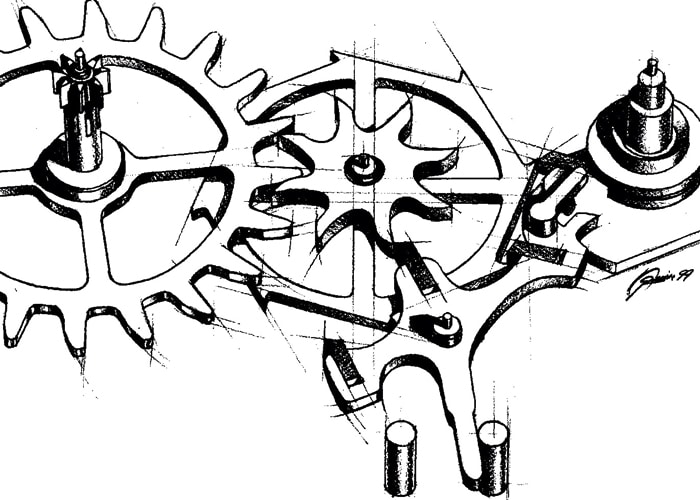
Dual Escapement
As a new and tiny brand, Laurent Ferrier has adopted this variation of the echappement naturel to gain a place among the more specialised brands. His system features two impulse wheels on the same level, having teeth of a special profile for contact with the lever – reduced to a single rod without arms. This double impulse escapement differs from the Journe or Voutilainen versions mainly by the absence of pallet stones. This is because the lever is made of silicon.
Advantages: high amplitude, effective, different, self-lubricating.
Drawbacks: secret, similar to the other double-wheel escapements.
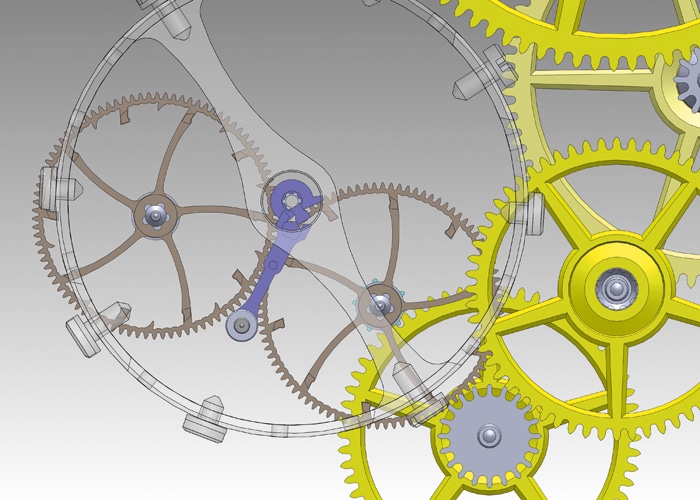
Pivoted Detent Escapement
A single pallet stone at the end of a lever called the detent locks the escape wheel. The passing balance-wheel lifts the detent for a fraction of a second, releasing the escape wheel. The detent, on a coiled spring, then drops back onto the escape wheel. The impulse is given directly to the balance, but only at each oscillation, diminishing the steadiness of the energy flow. However this is compensated by the associated reduction in friction. Worn on the wrist the detent would trip at the slightest shock until Urban Jürgensen made a reliable version. However it is not self-starting; you have to give the watch a twist to get it going.
Advantages: precise, effective and at last wrist-friendly.
Drawbacks: difficult to implement, rather experimental.
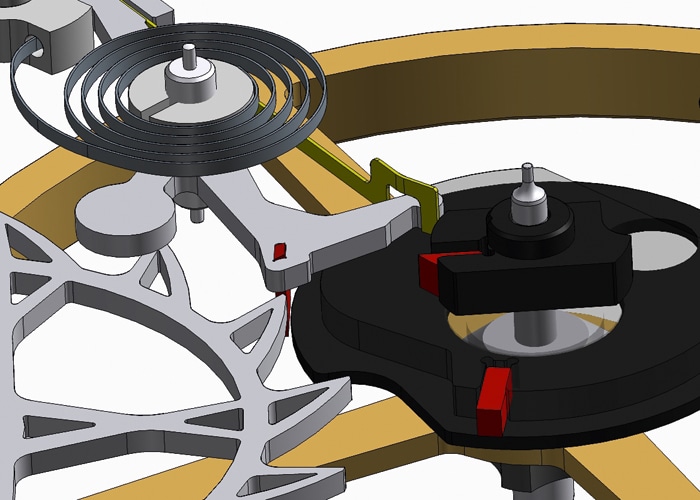
High-performance Biaxial Escapement
For a long time Francois-Paul Journe had a back-of-the-drawer design for a Breguet-type echappement naturel. His biaxial escapement has two impulse wheels on two levels released in turn at each semi-oscillation of the balance. The impulse is direct and the titanium lever is huge. It comes with a constant-force remontoir, a factor in improving the rate, so its advantages are difficult to assess in isolation. Unusually, it is self-starting when you wind the movement. The HPBE will likely be reserved for extra-special watches like the Chronometre Optimum rather than be applied generally.
Advantages: effective, oil-free, self-starting.
Drawbacks: very exclusive, complex.
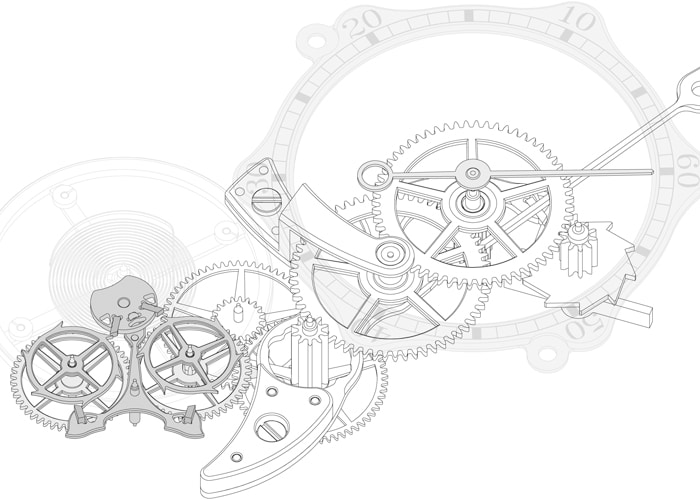
Ulysse Nardin Escapement
Ulysse Nardin introduced this escapement in the Freak watch in 2000, and it remains exclusive to this model. The company has since switched its research from escapements and regulating systems to the development of proprietary calibres. Like the echappement naturel, it’s a double-wheel escapement with direct impulse to the balance. Its lever is so short that it’s more like a plate. The system looks simple but has its subtleties. The tooth profiles are particularly sophisticated. It aims to reduce friction and is suitable for high-precision LIGA production techniques.
Advantages: no lubrication, prestigious, inventive, good mechanical efficiency.
Drawbacks: rare, complex, costly.
